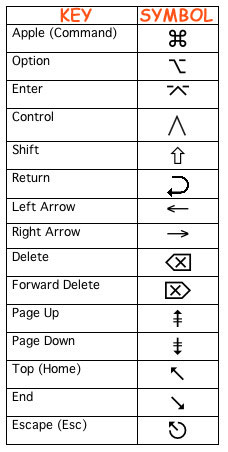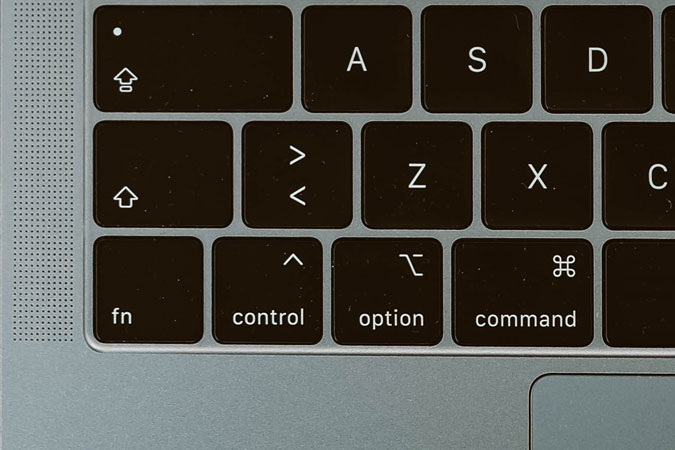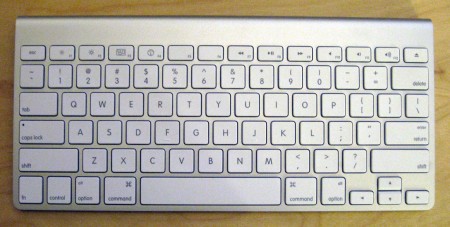
- WHERE IS UP ARROW ON MAC KEYBOARD MAC OS X
- WHERE IS UP ARROW ON MAC KEYBOARD PRO
- WHERE IS UP ARROW ON MAC KEYBOARD WINDOWS
This user account can be created and removed after testing via System Preferences > Users & Groups (as it is named in OS X Mountain Lion). You could also try the above steps with a fresh new OS X user account, which will inherit default settings from the localized user template for your language. If the new session works, then it stands to reason there's a problem in your specific shell configuration. If the shell you normally use has been customized, I'd back up and eliminate that customization before starting a new session. If another shell doesn't have the same problem, you will need to determine whether the shell configuration or shell itself is the problem. So, the possibility of a particular customized configuration for either shell being the culprit would be minimized. A benefit of trying this that Bash and Zsh shouldn't share any or many configuration files.
WHERE IS UP ARROW ON MAC KEYBOARD MAC OS X
Determine if you have the same problem if you switch to bash (the default for OS X since Mac OS X 10.3 Panther) or another shell. Your tags indicate that Zsh might be in use. If the problem doesn't repeat, then the configuration for those utilities or the interaction with your shell may be at issue, and you can look further into that.

If the problem repeats without them, you've gained some more information. If you are using the "screen" utility or an SSH session, you may wish to try the same processes without them. (This assumes you are using Terminal, and not an alternative, like iTerm.)

WHERE IS UP ARROW ON MAC KEYBOARD WINDOWS
If it is not "xterm-256color" (the default for new windows in OS X's Terminal) then you may wish to consider setting your window to use that via Terminal's preferences. I would check your terminal emulation type with: $ printenv TERM It is possible that your particular keyboard and/or laptop USB ports have a problem. If you have access to a different Apple or other vendor's USB keyboard, attempt to use that to see if the problem recurs. As it stands, I would approach this problem by trying to troubleshoot step-by-step, and here are some steps I would consider. Then, press the Option key five times each time you want to switch between controlling the mouse pointer and typing."If you continue to experience issues with your keyboard keys not working properly, read this Apple KB Article for more resolutions.It is possible that a little more detail would help answer this question. If you would like to control the mouse pointer with the keyboard and also use the keyboard for typing, enable "Press the Option key five times to turn Mouse Keys on or off" in Universal Access preferences. The following keys will continue to operate normally when Mouse Keys is enabled: Esc, Function keys, Eject, Delete, Tab, Shift, fn, Control, Option, Command, and the arrow keys.
WHERE IS UP ARROW ON MAC KEYBOARD PRO
(Keyboards with no numeric keypad or Num Lock key include: Apple Wireless Keyboard (2007), the built-in keyboard on MacBook (Late 2007) or newer, MacBook Air, or MacBook Pro (Early 2008), or newer.)

Note: If you are logged on to a user where Mouse Keys is already disabled, but your keyboard is not responding properly, toggle the radio buttons for Mouse Keys "On" then "Off" to restore normal functionality.Additional information provided in this Apple KB Article: "When Mouse Keys is enabled with one of these keyboards, you can use the keys 7,8,9, U, I, O, J, K, L, M, and '.' (period) to control movement of the mouse pointer and mouse clicking, but other numbers, letters, and keys cannot be used.

Note: You may also check/uncheck the box for "Press Option key five times to turn Mouse Keys on or off". Click the "Off" radio button next to Mouse Keys. Click the Mouse & Trackpad settings tab.ģ. Open System Preferences and click on the Universal Access preference pane.Ģ. To check your System Preference settings, or to enable/disable Mouse Keys: 1. The setting could have been activated while syncing from a MobileMe account that had the preference enabled, migrating a user from another computer using Migration Assistant that had the preference enabled, or by pressing the Option key five times (if that setting is enabled in System Preferences). Mouse Keys can be enabled a number of different ways. These symptoms may also exist if you log in to a user account on a Mac where a different user account has Mouse Keys enabled. If you find that you are unable to type letters or numbers on your keyboard, it is very possible the Mouse Keys function has been enabled. Read further to get a resolution to this issue. Written by Joe AimonettiSome users may experience issues with their keyboards not working as expected-possibly due to the Mouse Keys function being enabled on their Mac.


 0 kommentar(er)
0 kommentar(er)
